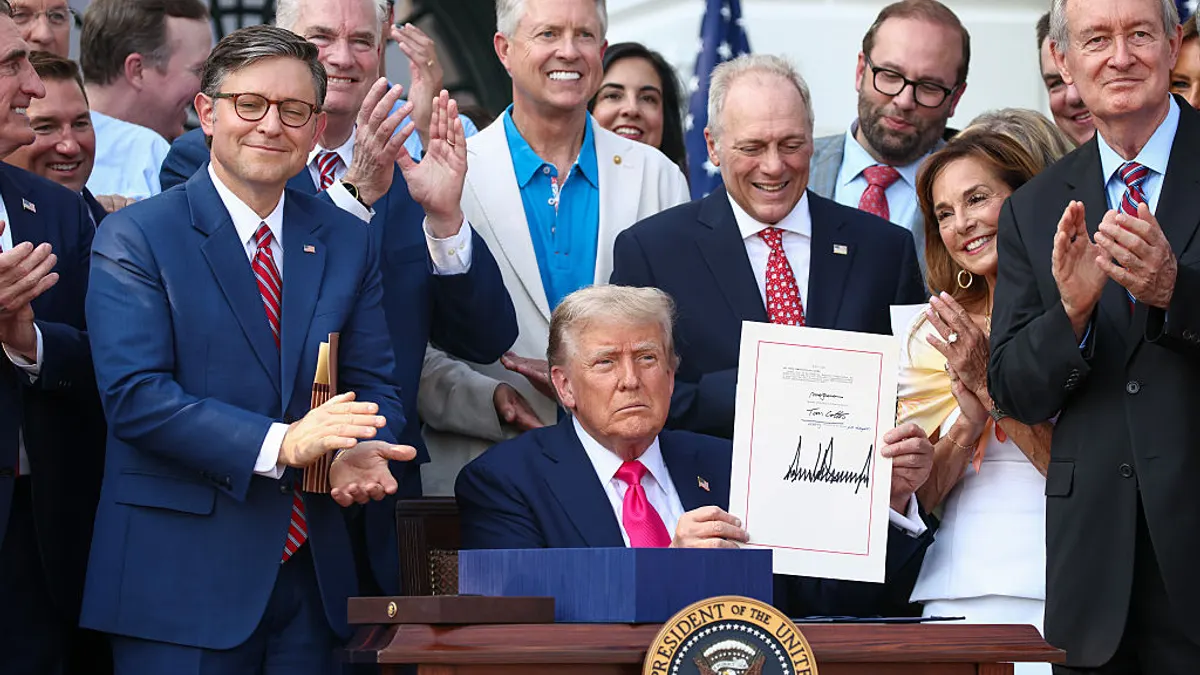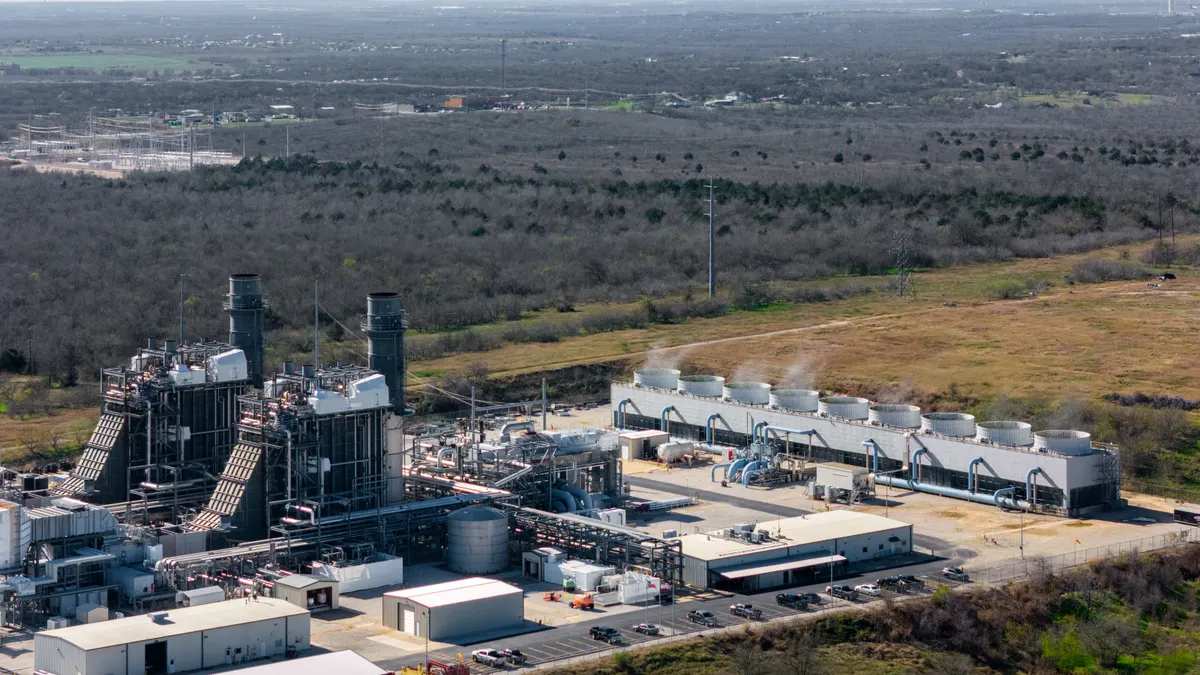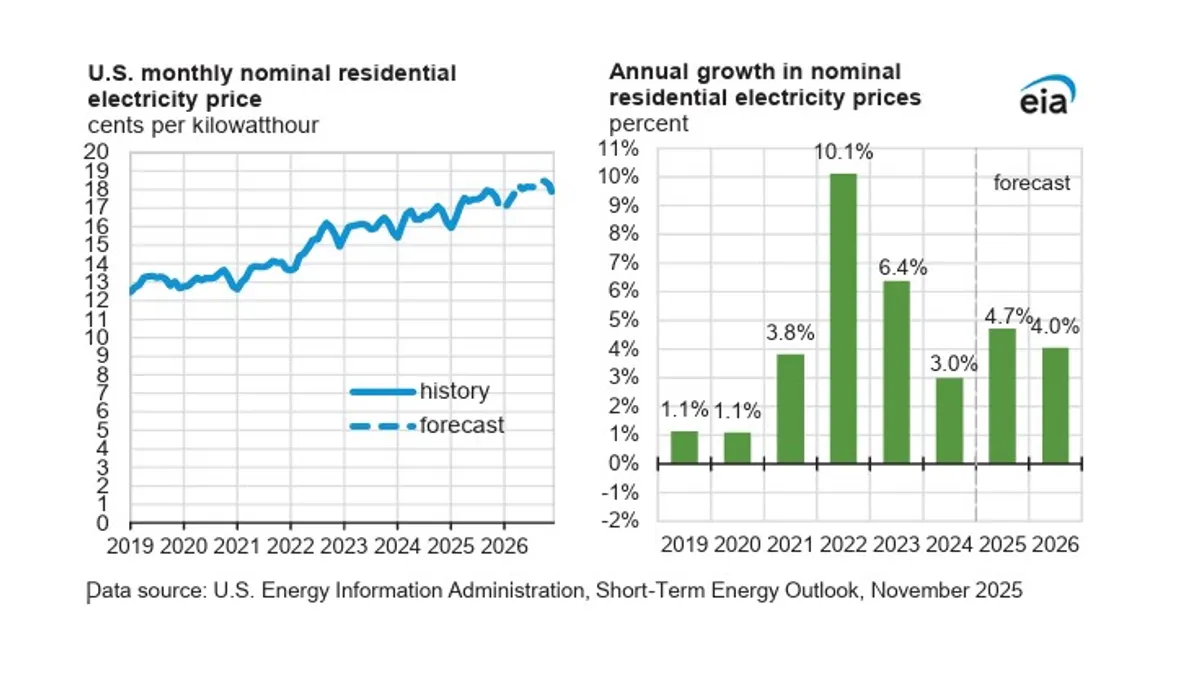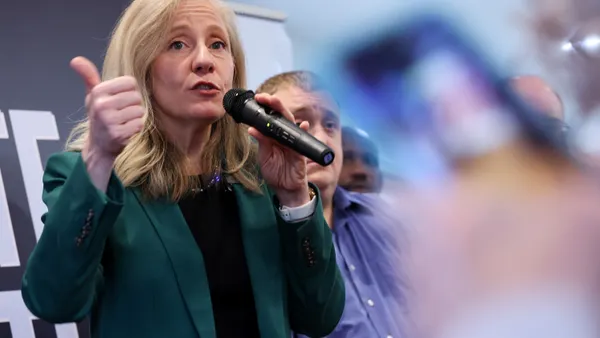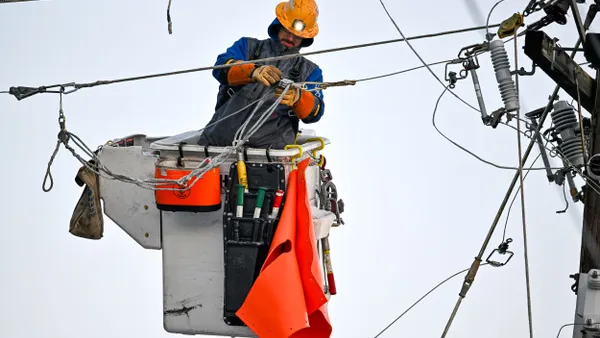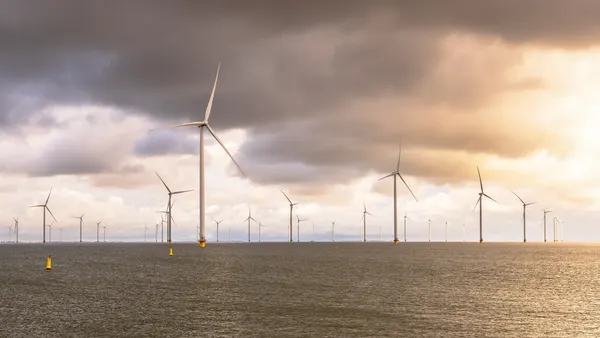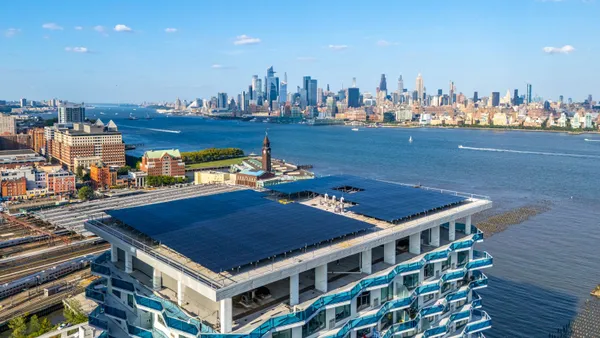Dive Brief:
- President Donald Trump issued an executive order Monday instructing the Secretary of the Treasury to publish guidance within 45 days “to ensure that policies concerning the ‘beginning of construction’ are not circumvented” by wind and solar projects that saw their eligibility for the 45Y and 48E clean energy tax credits slashed by budget legislation signed into law on July 4.
- “It is unclear how the Treasury will amend the ‘beginning of construction’ language while also keeping in mind that a ‘substantial portion of the subject facility has been built,’” Jefferies analysts said in a Tuesday note. This “could be an attempt to pivot back to the House version of the OBBB which had narrowed credit eligibility with ‘begin construction’ AND ‘placed in service’ language.”
- Prior to the EO, clean energy advocates were already grappling with the anticipated impacts of the legislation, which is expected to slash capital investment in U.S. electricity and clean fuels production by around $500 billion over the next ten years, according to a report from the REPEAT Project.
Dive Insight:
The executive order appears to make good on a deal Trump reportedly struck with the Freedom Caucus, in which he promised to use his executive powers to further curtail federal subsidies on wind, solar and EVs in exchange for their support, which was necessary to secure the bill’s passage in the House.
The order also instructs the Secretary of the Treasury to “implement the enhanced Foreign Entity of Concern restrictions in the law” and “revise any identified regulations, guidance, policies, and practices [...] to eliminate any such preferences for wind and solar facilities.”
Even before the executive order, the bill’s introduction of tight eligibility standards for projects in development was expected to lead to uncertainty around capital investment. Wind and solar projects must start construction within a year of the law’s enactment to qualify for 48E and 45Y, or they will be subjected to an end of 2027 “placed in service” deadline to be eligible.
Projects that don’t manage to commence construction before July 4 next year “will get cut off at the knees,” said Harry Godfrey, who leads Advanced Energy United’s federal policy team.
“You start in August of ‘26, you've got to get your project built in 15, 16 months to qualify, and if for any reason you don't get that placed in service — too bad,” he said.
Godfrey said that even if developers can thread that needle in terms of timing, another significant hurdle is convincing their financiers that they can.
“Can you convince them of the future that we have not yet arrived at, that you will somehow avoid the added litigation – somebody appeals the air permit, or the interconnection queue slows because of added projects, so they don't quite get to your interconnection timeline?” he said. “It's not as if capital sits there and patiently waits until December of ‘27. No, capital says in July or August of ‘26, ‘You can't tell me with absolute certainty that this is getting done in the next year. Sorry, I gotta go elsewhere.’”
Those projects, which are currently in early to mid-stage development and would be coming online to “help build this supply shortfall in the latter part of this decade” are the ones which Godfrey anticipates will get “acutely hit by this bill.”
Godfrey said one somewhat hopeful note for the clean energy industry is that tax credits benefitting storage and next-generation clean energy technologies were “preserved over the medium to long term in this bill … due in no small part because of a broad bipartisan consensus.”
The advanced manufacturing 45X credit will also continue in the long-term, Godfrey said, though it may be hobbled by the complex FEOC rules the bill introduces.
But between 45X and the preservation of the tax credit transferability mechanism, Godfrey sees some of the industrial policy that supports the industry surviving. He said, “It's not perfect. We see demand destruction occurring here. That is problematic, but we do still see a supply side policy building up American industries, working to bring those supply chains over here.”
“The transferable tax credit market — including manufacturing, nuclear, battery storage, geothermal, carbon sequestration, clean fuels, and hydropower — remains robust moving forward,” said Hasan Nazar, head of policy at Crux, a finance technology company that connects tax credit buyers and sellers. “Moreover, the interconnected nature of clean energy financing means that tax credit policy changes make debt capital and other types of financing even more critical for project success.”



